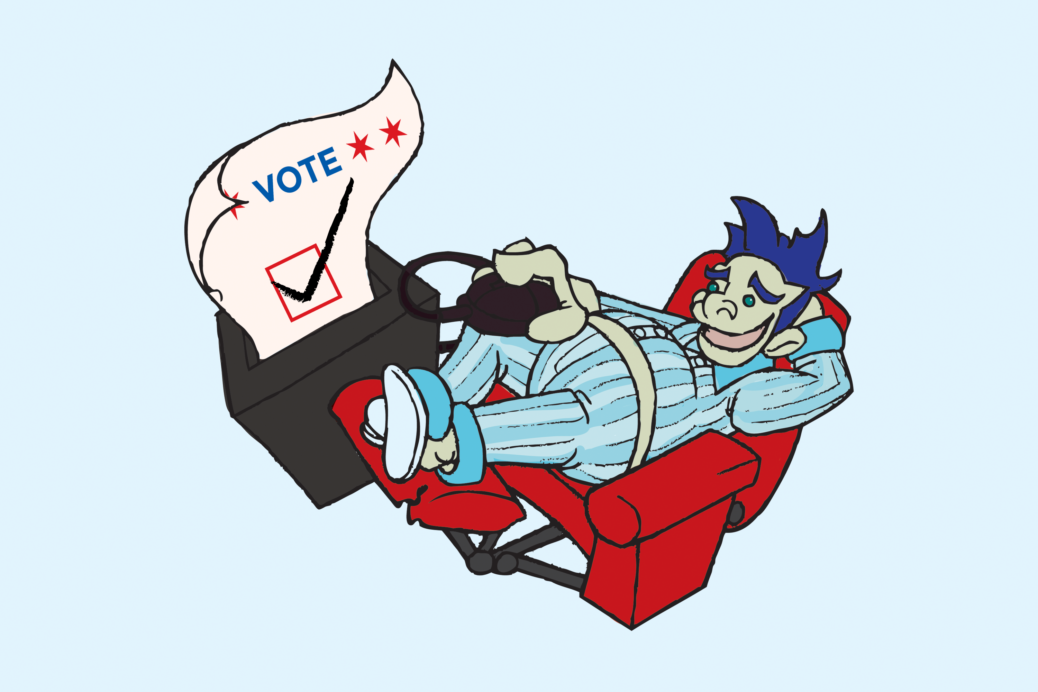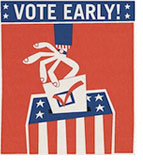November’s presidential election is on many Americans’ minds.Some have made their decision as others harbor doubts.
Whereas individuals may not know which candidate they will vote for, all know their course of action on Election Day. They will either stop by their local civic center and step into a booth or hope that they wrote the address on the envelope of their absentee ballot properly.
E-government technology is designed to help government carry-out its essential functions more economically and efficiently. As the premier e-government software manufacturer, GovPilot can attest that technology has automated and streamlined over 100 routine government operations. Though it is the foundation of democracy, voting for an elected official is the one facet of government largely untouched by e-government.
This blog post discusses the reasons behind this glaring technological disparity and provides insight into the likely future of online voting.
Why Vote Online?
Most in favor of revamping the US voting system envision a process wherein voters access a designated website from their personal computer and submit an electronic ballot. Proponents of online voting see many benefits of its widespread implementation. They maintain that if US elections routinely offered the option of remote, Internet voting, the nation would see improved voter turnout and quicker election results. Not to mention costs saved on printing and mailing paper ballots as well as setting-up and staffing polling stations.

So, is online voting the future?
Online Voting’s Past
In 2000, Arizona’s Democratic Party set-out to find an answer, conducting the first test of this Digital Age concept by offering voters the option to submit ballots online during that year’s primary.
Pre-election, critics predicted that the online voting option would open Arizona’s Democratic primary to a host of hazards, including hacking, mass vote-robbing, downed servers, corrupted data and not-so-secret balloting. Some considered the Democrats’ decision to open online polls to be less than democratic, arguing that it was unfair to poor and minority voters, who had (and although the digital divide has narrowed considerably, still have) less computer access than wealthier whites. On these grounds, nonprofit organization, the Voting Integrity Project, sued to stop the online election, but its request was denied and the Democratic Party’s experiment trudged on.
In late February 2000, the party mailed a voter certificate and PIN to each of Arizona’s 843,000 registered Democrats. From Tuesday, March 7th through Friday, March 10th, approximately 36,000 of Arizona’s registered Democrats became the first online voters. These pioneers logged onto the Arizona Democratic Party’s official voting website using their assigned PIN and two other forms of personal identification. This information was electronically compared to voter registration records. Once cleared, voters simply clicked on their presidential and congressional candidates of choice. After a vote was cast, the associated PIN was electronically disabled to prevent double voting. Glitches aside, the online voting process took approximately two minutes. Saturday, March 11th, marked the official Primary Day.The exact same system was mounted on public computer terminals that were used in place of traditional voting machines at polling places. Paper ballots were also available.
Though naysayers’ most extreme security fears were not realized, the experiment didn’t go as smoothly as supporters of online voting had hoped. Democrats with outdated registration records never received their PINs through the mail (they were allowed to obtain their PINs and vote in person on Saturday). The party’s 12 support phone lines quickly jammed and older versions of Netscape crashed once users accessed the voting program.
Though the Arizona Democratic Party’s online voting fueled primary failed to make a convincing case for widespread adoption, voting traditionalists would be forced to reexamine their position a few months later. The outcome of that November’s presidential election was mired in controversy due to the limitations of paper-based voting processes, which many took as evidence that, once bugs were fixed, online voting would be a staple of upcoming elections.
Online Voting Today
Fast forward to 2016. The Internet has woven itself into almost every aspect of life, moving from a convenience to a necessity. The novelty of Internet has worn-off and discussions of online voting focus more on the rights of military personnel and less on civilian convenience.

Like all registered voters, military service members can contact their local election official and request an absentee ballot. However, they must do so seven weeks before the election in question and, depending on where they’re stationed, service members may not receive the absentee ballot in time. Indeed,according to the U.S. Election Assistance Commission, 49.8 percent of these ballots were not received in time to influence the 2008 presidential election. In 2009, the federal Military and Overseas Voter Empowerment (MOVE) Act was passed to rectify this issue. It mandates that ballots be ready 45 days before an election specifically to provide time for the ballots to be delivered to Afghanistan or any other location and returned in time to be counted.The MOVE Act yielded slightly better statistics. In the 2012 presidential election, 36.6 percent of military service member ballots received in time to count.
Numbers like these inspired the National Defense Committee to recruit the help of 17 computer scientists in their mission “to devote the deserved resources to scientific research that can solve the military voter problem.” Research goals are as follows:
- There would be no delay between marking the ballot and casting the ballot.
- The voting system would provide error checking to the voter.
- Voters could obtain one or more replacement ballots without delay.
- Voters could verify that their ballot was cast when it was cast.
- Where state law allows, the voter could register and vote on Election Day.
The National Defense Committee maintains that, with proper funding, secure online voting can be available to military service members in time for the 2016 presidential election.
Until online voting technology has been perfected for priority segments of the population, it will not be presented to the masses as a convenient alternative to traditional voting.
In the meantime, GovPilot software makes it possible for government and citizens alike to enjoy convenient and cost effective municipal operations.







